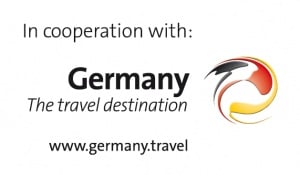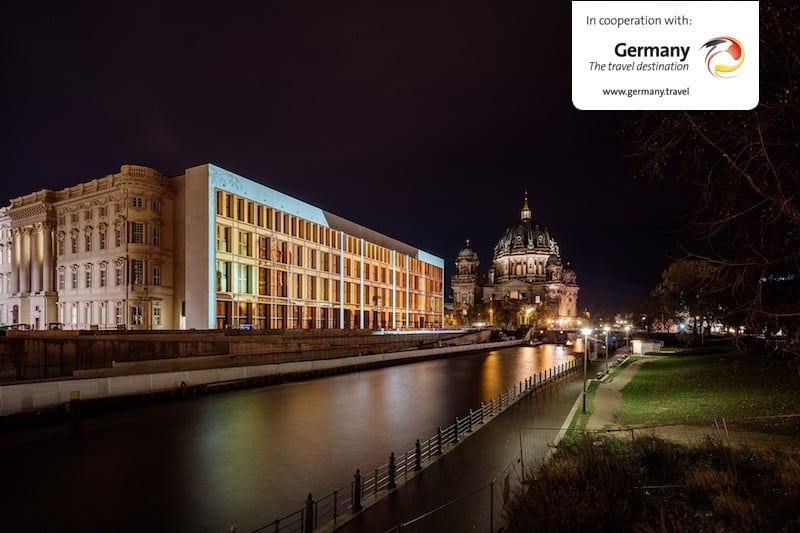
Humboldt Forum | Image credit: visitBerlin, Landesarchiv Berlin
When we think about Berlin, we think about historically laden monuments such as the Berlin Wall, Brandenburg Gate, and Checkpoint Charlie, to name a few. The capital of Germany has always been a staple destination for travellers with an affinity for educational and immersive experiences. Now, such travellers have another reason to celebrate because a new and profound Berlin attraction will soon be added to their list of must-visits!
The Humboldt Forum is currently Berlin’s biggest museum project. Nestled within the premises of the Berlin Palace, this museum will occupy 42,000sqm and will give the arts and sciences a herculean platform once the museum is finished later this year. Even now during its development, the Humboldt Forum has been the talk of the town as locals compare it to the British Museum. This is because the Humboldt Forum will not only have free entrance and display unique artefacts, but it will also become a venue for topical discourse, as well as contain two important submuseums.
While we wait with bated breath to see the completion of the Humboldt Forum, let’s take a look at everything there is to know about this Berlin attraction!
Also read: Things to Do on a Short Break in Berlin
1. The Forum was named after two scholars and visionaries
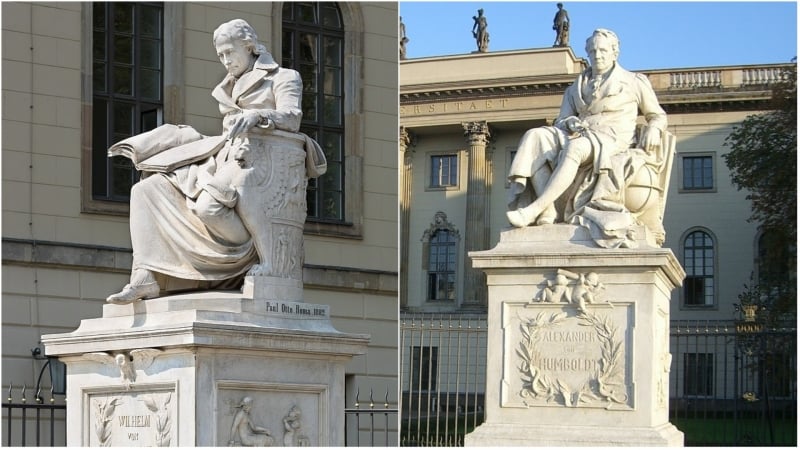
Wilhelm and Alexander von Humboldt statues in Humboldt University | Image credit (L-R): Christian Wolf and jensjunge
The Humboldt Forum was named in honour of two German geniuses who happened to be brothers: Wilhelm and Alexander von Humboldt. The Humboldt brothers were many things. Wilhelm was a linguist and a diplomat, while Alexander was a traveller and geographer. But most of all, they saw themselves as students of the world, always curious and learning about how everything was connected through nature and culture. This same inquisitive spirit is what the Humboldt Forum seeks to emulate and impart to future visitors.
Fun fact: Wilhelm was the founder of the prestigious Humboldt University in Berlin. On the other hand, Alexander is somewhat seen as the forgotten father of environmentalism. He was the first to suggest the notion of human-induced climate change.
With such a high standard to live up to, this Berlin attraction pays homage by displaying “Humboldt objects” which guests can examine. There are two prominent objects that shouldn’t be missed: The Madonna and the Aztec Goddess. Both objects were appreciated by Alexander von Humboldt; he found the Madonna in Mexico and called it a “featherwork painting” due to the tiny feathers that created the mosaic, while he brought the Aztec Goddess back from his travels from the Americas. This basalt sculpture combined traits of the Aztec goddess Chalchiuhtlicue and the goddess of maize Chicomecóatl.
In honour of the brothers’ inquisitive spirits, the museum will continue to live out Humboldtian principles by hosting discussions and encounters that tackle situations and events that affect our world today. No doubt that this is something curious and eager travellers ought to experience!
2. The site has roots dating back to the Middle Ages
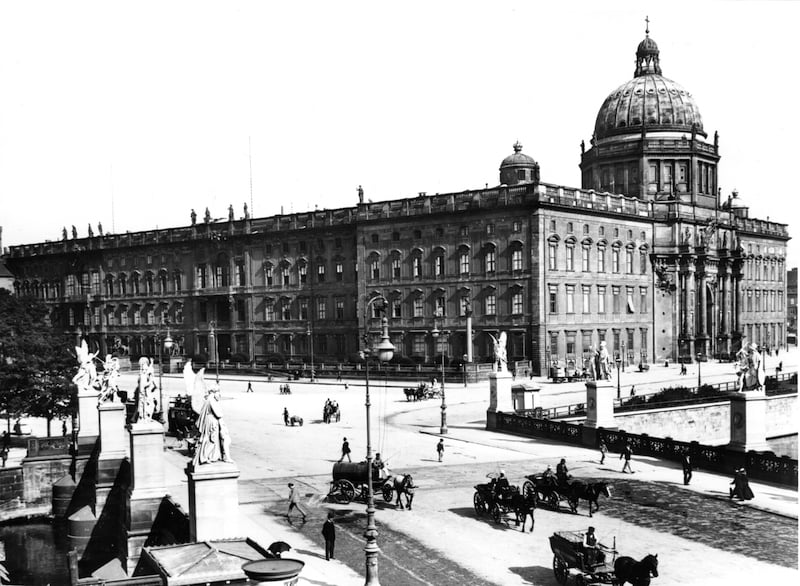
Berliner Stadtschloss 1898 | Image credit: visitBerlin, Landesarchiv Berlin
It’s only fitting to build a monumental museum on a site which has seen historical and architectural changes aplenty, dating back to the Middle Ages until modern day. The Humboldt Forum was originally the location of a medieval Dominican monastery, which was then replaced by Hohenzollern Palace, followed by other cultural developments throughout different eras. Today, visitors can get a glimpse of this rich past — an 800-year old history, in fact — in the Humboldt Forum itself.
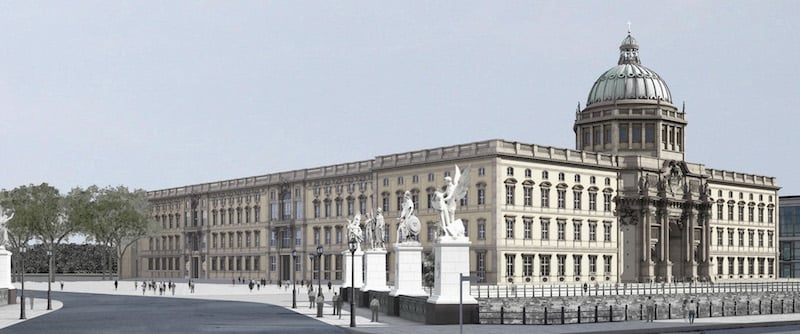
Berliner Stadtschloss | Image credit: visitBerlin, Landesarchiv Berlin
At the basement, see the relics of the Dominican monastery and the foundations of the original Berlin Palace. Among the age-old items visitors will find is the ancient palace’s imperial heating system, an advanced mechanism during its time. Such artefacts unfurl snippets of how the monastery residents and the palace servants lived in the days of yore.
In the Sculpture Hall, guests will discover preserved statues that symbolise the strength and majesty of the House of Hohenzollern from way back in the 1700s. There’s even a video panorama that museum-goers can watch at the ground floor, which shows a comprehensive rundown of the Humboldt Forum site’s historical developments.
KNOW MORE ABOUT HUMBOLDT FORUM’S HISTORY
3. The Humboldt Forum’s architecture is an eye-popping blend of modern and baroque facades
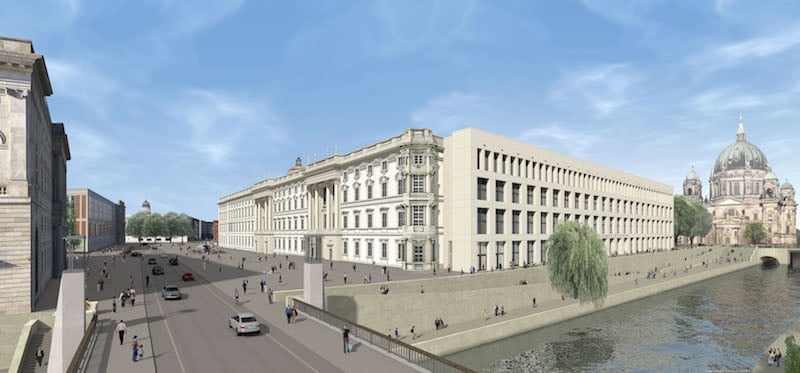
Humboldt Forum | Image credit: visitBerlin, Landesarchiv Berlin
The visual journey continues by gazing upon this Berlin attraction’s eclectic architecture. What’s unique about the Humboldt Forum’s exterior is its marriage of the old Berlin Palace’s baroque motifs to contemporary style. According to the museum’s Italian architect Franco Stella, the Humboldt Forum will largely adopt two concepts: piazza and palace. The outcome will boast a tasteful mix of the old and new world, which travellers will undoubtedly find postcard-worthy.
Visitors will be able to appreciate a modern facade on the side that faces the Spree. Meanwhile, the museum’s baroque facades are still under construction. But once finished, we’ll soon appreciate not only the polished old-world charm, but also a generous view of Lustgarten, Schlossfreiheit, and Schlossplatz. All of which are staple Berlin attractions that tourists often flock to so as to experience Berlin’s refreshing green spaces and proud buildings.
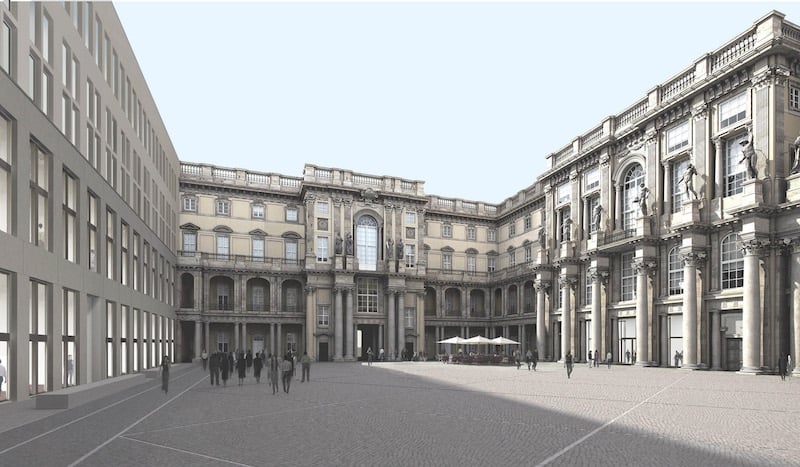
Humboldt Forum | Image credit: visitBerlin, Landesarchiv Berlin
That said, if you’re raring to visit the Humboldt Forum before its completion, there are two courtyards in the museum that are open to visitors 24/7. The Schlüterhof courtyard is the central square of the museum and will be used to host various events. The Passage courtyard, on the other hand, runs through the whole building and is reminiscent of ancient Rome and ancient Greek’s public squares.
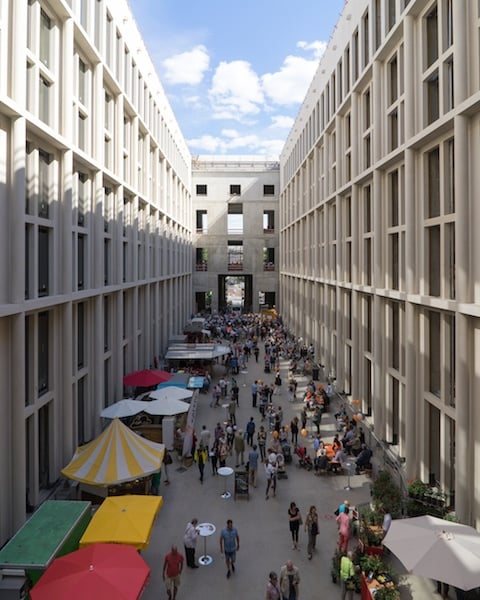
Humboldt Forum’s Passage courtyard | Image credit: visitBerlin, Landesarchiv Berlin
Lastly, one can’t miss the Foyer, which features the reconstructed Eosander Gate, but now with modern galleries to match. From the high-ceiling Foyer, there are two exhibition areas to explore, and two function rooms decked with high-end technology to host future symposiums of congress and even music performances!
4. The Humboldt Forum will feature two distinct museum collections
The main highlight of the museum is arguably the two vast collections that come from the Ethnological Museum of Berlin and the Museum of Asian Art. The historical artefacts from these two museums were originally situated in the district of Dahlem; but in 2000, the Berlin government decided to relocate these priceless collections to the city centre. Hence, approximately 20,000 exhibitions from these museums were transferred to the Humboldt Forum.
The featured antiquities come from all over the world. Learn about the most popular African displays in Berlin by observing the bronze, ivory, and wooden figures from the Kingdom of Benin and Cameroon, including Namibia leather clothing adorned with glass and iron beads. The collection from the Americas, on the other hand, showcase totem poles and pieces from native America’s culture.
The Asian gallery notably features immersive experiences such as Japan’s tea ceremony, a replica of a Chinese court and throne room, and reconstructed Buddhist cave temples, only to name a few. And finally, the Oceania exhibit proudly presents the continent’s seafaring heritage through the displayed boats and their building materials; plus, indigenous houses from Palau and Papua New Guinea that would give culture vultures the insight and alternative encounters they seek.
DISCOVER MORE ABOUT THE HUMBOLDT FORUM’S COLLECTIONS
5. It will house the Berlin Exhibition as well as temporary exhibitions
If you want to learn more about Berlin specifically, then the Humboldt Forum is the best place to start. The museum features a 4,000sqm exhibition that presents Berlin’s past and present, what the city has contributed to the world, and how Berlin, in turn, was changed by global events.
Berlin has many sides, so it’s only fitting that the exhibition is divided into seven rooms: Revolution, Free Space, Boundaries, Entertainment, War, Fashion, and Interconnection. Each room is installed with immersive attractions. The Entertainment room, for example, displays large spheres visitors can enter to immerse in Berlin’s music scene and even to get a feel of the city’s old palace. Meanwhile, the War room’s trademark is the huge shrapnel centrepiece that has seemingly created cracks on the floor. Suffice to say, immersive and striking are the perfect words to describe the Berlin Exhibition!
But let’s not forget that the Humboldt Forum stays true to its principle of engaging in discourse for continuous discoveries and learning. This means that the museum is by nature always open to collaborations with curators from all over the world. Expect temporary exhibitions to pop up every now and again, especially those that seek to address current global issues. Now, that’s something you can’t miss when in Berlin.
6. There are varied interpretations of the cupola’s cross
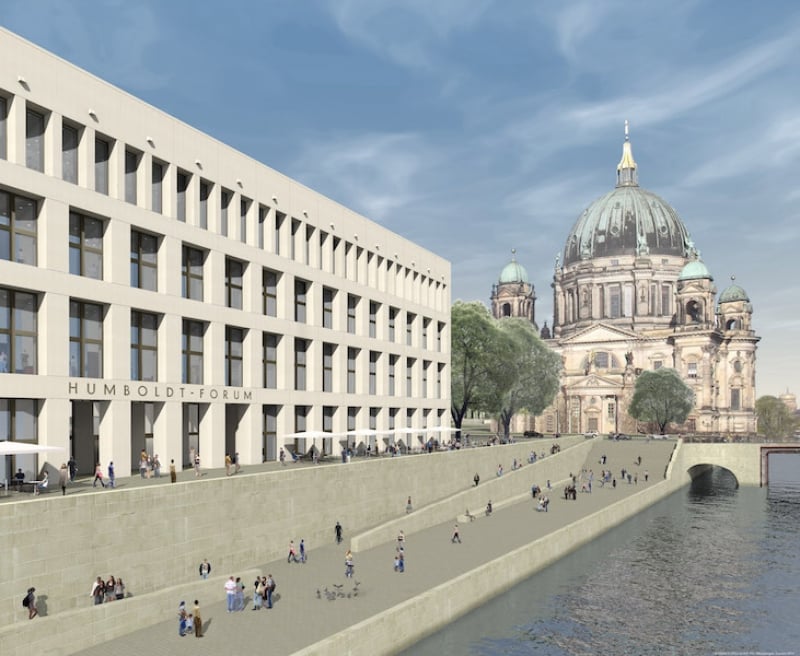
Humboldt Forum | Image credit: visitBerlin, Landesarchiv Berlin
In 2017, it was made known that a cross on top of the cupola at the western side of the museum would be installed. Because the Humboldt Forum stands as a symbol of evolving discourse in culture, arts, and sciences, the news about the cross installation naturally sparked curiosity, critique, and varied interpretations about its purpose and meaning in the museum.
Some locals claim that the cross is a reminder of Europe’s many errors during its colonial eras. Others see the cross as a symbol of reconciliation. Among the most intriguing points is the fact that Alexander von Humboldt, one of the museum’s namesakes, might have preferred a more universal design — that wasn’t partisan to any religion — for the establishment named after him. In fact, his brother Wilhelm was even recounted saying that he wasn’t sure whether or not Alexander stood by a religious faith.
Even with this, the public is left to speculate and keep the discussion going. That is, after all, what the Humboldt brothers would have encouraged given their inquisitive natures. And so, the Humboldt Forum emboldens locals and future visitors to keep contributing to this conversation by sharing their own interpretations about the controversial cupola’s cross.
But when all is said and done, a cross is created by conjoined vertical and horizontal lines, much like when roads converge and travellers see eye to eye. These personal encounters and discoveries that allow us to understand other peoples are ultimately the essence and goal of the Humboldt Forum. Visit it soon and see for yourself what lies in store for you in this prodigious Berlin attraction!
READ MORE DISCUSSIONS ABOUT THE MUSEUM’S SYMBOLISMS
Berlin was already a treasure trove of historical and beautiful facets. But with the addition of the new Humboldt Forum, the capital of Germany is on the right track to becoming a strong, global cultural hub. Be part of Berlin’s milestone as it opens the Humboldt Museum in late 2020, and enter a forum which will leave you enlightened and even more curious about our interweaved world!
For more information, visit the German National Tourist Board official website, as well as Berlin’s official travel website and Facebook page.
Brought to you by the German National Tourist Board.
